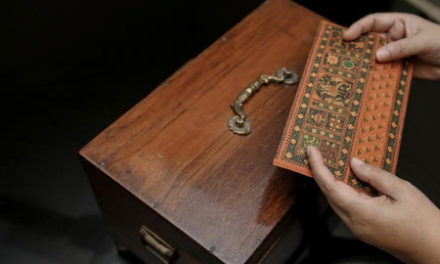When virtual reality (VR) and augmented reality (AR) entered the real estate industry a few years ago, there was plenty of uncertainty. How would the technology change the traditional real estate transaction? Would it replace brokers and realtors? Who was going to pay for it?
“It didn’t replace the agent,” says Scott Durkin, president and COO of Douglas Elliman. “It’s actually streamlined the process.”
The common tune across the industry now is that VR (immersive computer-generated environments experienced by wearing a computerized headset) and AR (images, sounds, and touch capabilities that “overlay” the real world, creating an enhanced version of reality) are expanding the framework for the future of the business.
Take the Curate app from Sotheby’s International Realty, for example. Initially launched on Android and released last month for iOS, it uses AR to place digital images of furniture in the room of a prospective home (or any home, for that matter).
Using modeling technology from VR company Rooomy, users can imagine how they might functionally live in their homes with furniture options set to their individual tastes.
“When the agent invites the client into the home, it helps them [visualize],” says John Passerini, the VP of interactive marketing at Sotheby’s International Realty. “They walk into a bedroom and can turn it into a den.”
At the high end of the market, many buyers come in with their own personal touches anyway, and Passerini wants to create a new ad platform via partnerships like the one they’ve developed with interior marketplace Viyet.
While in Curate, users will be able to see furniture models directly from Viyet’s inventory and then click through to purchase these pieces. It’s a turnkey solution that, if it catches on, represents a whole new dimension of in-app buying for big-ticket items.
“We’ve created a new way for these companies to get ahead of their clients,” Passerini says.

Curate by Sotheby’s International Realty Photo Credit: Courtesy Sotheby’s International Realty
Another large benefit of VR and AR is the ability to close the distance between prospective buyers and the actual property itself.
In Miami, one of the most acclaimed examples is the Herzog & de Meuron–designed Jade Signature, whose sales team used Samsung Gear VR Goggles to transport interested parties to open-air kitchens and beautiful common areas with the Sunny Isles beach as the backdrop.
“It offers a much clearer understanding of the design and attention to detail,” says Edgardo Defortuna, CEO of Fortune International Group (the developer behind the building).
While Fortune International Group didn’t produce estimates on the conversion rates from its VR pitch, its current implementation of the technology speaks volumes to its success. “We’re using it in all of our projects,” Defortuna says. He notes that the technology is a topic of conversation at every initial meeting, regardless of whether they are developing a property or representing sales and marketing agents.
Even in fast-moving markets like Miami and New York, the initial cost of not only the hardware but the imaging and rendering, too, isn’t stopping firms from making the investment. (The latter can cost north of $3,000 just to shoot 360-degree video.)
“It really helps when we travel to different countries—especially in Latin and South America,” Defortuna says.

Interior with piano Photo: Courtesy DBOX
And when you’re selling seven- and eight-figure properties, any strategic advantage is vital.
Because both VR and AR are still in their infancy in real estate, the technologies are still adapting to the breakneck pace of the business. Paul Boomsma, president and CEO of Leading Real Estate Companies of the World, cites a 21st-century approach to solve one of these issues. “It’s still laborious to get [360-degree cameras] in every nook and cranny, so agents are embracing FaceTime as a showing method. It’s easy for the client and becomes very personal,” he says.
Others, like Clelia Warburg Peters, president of Warburg Realty and cofounder of real estate tech accelerator MetaProp, believe that gateways like Curate are only offering part of the picture.
She says, “AR starts with what’s there, but it’s hard to imagine that space becoming a space that’s yours.” She adds that’s why Warburg, a company that closed $202.5 million of real estate last year in New York, hasn’t made the full-scale investment into VR or AR. She wants to see something that can fully bring buyers’ particular visions to life.
“I think we’re 12 to 18 months away from something being meaningfully useful to consumers,” she says. With the VR and AR markets poised to grow exponentially (PwC projected that there will be over 40 million active VR headsets in the U.S. by 2022, and Global Market Insights estimated that the global market for AR products will exceed $50 billion by 2024), developers and realtors will continue to find more meaningful ways to market and show properties.
It’s clear that in the interim, VR has proved useful for forthcoming properties and developments that don’t yet have a physical product to show prospective buyers, while AR is helping to paint a picture—even if the brushstrokes are still fairly pedestrian. On a case-by-case basis, both technologies are showing new perspectives and captivating those who have jumped on board.
When asked about the success of Jade Signature’s VR efforts, Defortuna emphatically says, “Would I do it again? Yes, in a second.”
Source: Robb Report





